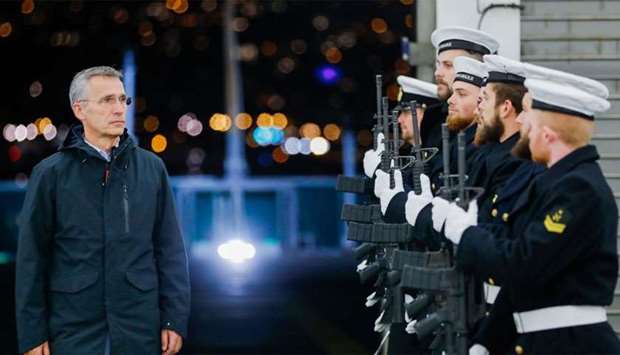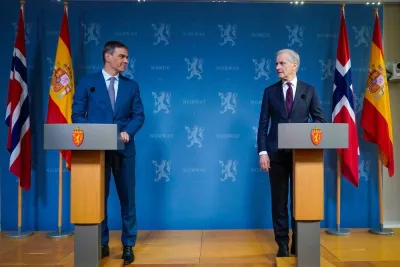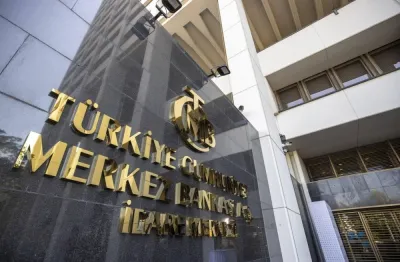NATO's biggest military exercise since the Cold War - currently under way in Norway - is strictly ‘defensive,’ NATO Secretary General Jens Stoltenberg said Tuesday while visiting the Scandinavian country.
The exercise, codenamed Trident Juncture, began last week. Around 50,000 soldiers, 10,000 vehicles and more than 300 aircraft and ships are taking part. It involves land, sea, air and cyber capabilities.
‘This is a necessary exercise to make sure that NATO provides a credible deterrence. The reason is why we do that is to prevent conflict, not to provoke a conflict,’ Stoltenberg told reporters.
NATO has been transparent about the exercise and invited observers from other countries, he noted.
Stoltenberg was speaking after meeting with Norwegian Defence Minister Frank Bakke-Jensen. The two were to be joined by other officials including NATO ambassadors in observing some of the NATO manouevres near the Norwegian city of Trondheim.
Trident Juncture's aim is to practice the alliance's response to an attack on one of its members.
In addition to the 29 NATO members, partner countries Finland and Sweden have also contributed forces to the exercise, which runs until November 7.
Stoltenberg reiterated that Russia had informed NATO last week about planned tests of missiles in international waters off Norway due to begin November 1.
‘I expect Russia to behave in a professional way, we will not change the plans of our exercise,’ the NATO chief said, adding that NATO would monitor the Russian operation, which is scheduled to end Saturday.
Stoltenberg also welcomed that the NATO-Russia Council - a key dialogue forum - was to meet Wednesday in Brussels but declined to comment on the agenda.
Stoltenberg and Bakke-Jensen said the Trident Juncture exercise was not a Cold War-style exercise.
‘We are exercising collective defence - that's the core task of NATO. It's to show we have the resolve, the capabilities, the will to defend all allies,’ Stoltenberg said.
‘During the Cold War you had two military blocs confronting each other, the Warsaw Pact and NATO. You had hundreds of thousands of combat-ready troops on both sides along the East-West border in Europe. You don't have anything similar to that today,’ he added.
Another difference was that there were now far fewer nuclear weapons in Europe, he added.
‘What we see today is a more unpredictable situation where it is harder to foresee exactly what will happen, and there is less agreement on what are the rules of the game,’ Stoltenberg said.
The use of ‘hybrid tactics’ including cyber attacks and meddling in domestic politics as well as the risk of terrorist attacks were among contemporary challenges that NATO has to contend with, he said.
Stoltenberg, a former Norwegian prime minister, arrived in the country on Monday.



